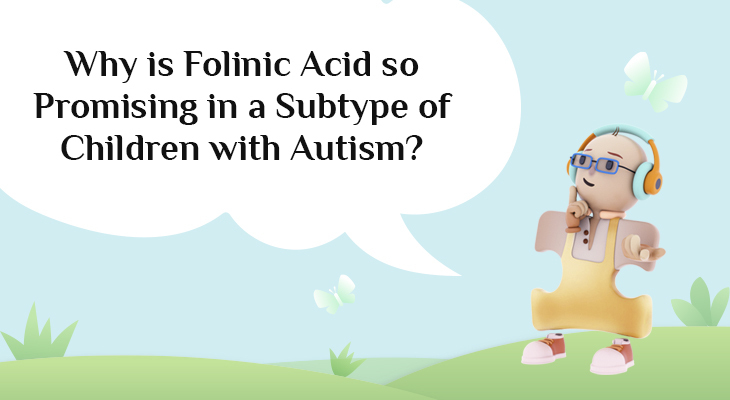
Introduction
Perhaps you have seen the recent CBS Evening News feature detailing the efficacy of folinic acid in children with autism spectrum disorders.
https://www.cbsnews.com/news/autism-leucovorin-medicine-folic-acid/
This seems to be a breakthrough for some children, aiding in improvements with speech, communication and behavior.
So, what exactly is folinic acid and why does it seem to provide improvements in autistic children?
Folinic acid is a form of Vitamin B9. Also known as leucovorin or 5-formyltetrahydrofolate, it is a biologically active form of folate that does not rely solely on the folate receptor alpha (FRα) for cellular uptake. Instead, folinic acid can enter cells via alternative transport mechanisms, such as the reduced folate carrier (RFC) or other folate transporters such as the proton-coupled folate transporter.
Folinic acid (leucovorin) shows promise in children with autism spectrum disorder (ASD) who have folate receptor alpha (FRα) autoantibodies. This is because it can bypass the blocked folate transport system and restore cerebral folate levels, potentially improving neurological and behavioral symptoms. Here’s why it’s particularly promising:
1. Folate Receptor Autoantibodies (FRAAs) in ASD
- A larger percentage of children with ASD have been found to have autoantibodies against the folate receptor alpha (FRα), which impair folate transport across the blood-brain barrier (BBB).
- This leads to a form of cerebral folate deficiency (CFD), where the brain has low levels of 5-methyltetrahydrofolate (5-MTHF), the active folate form crucial for neurotransmitter synthesis, DNA methylation, and myelin formation.
2. Folinic Acid Can Cross the Blood-Brain Barrier
- Unlike folic acid (which must be converted to 5-MTHF and is poorly transported when FRα is blocked), folinic acid (5-formyl-THF) can be directly converted to 5-MTHF.
- More importantly, folinic acid can use alternative transport mechanisms (e.g., reduced folate carrier, RFC) to enter the brain, bypassing the blocked FRα pathway. This is a very important point.
3. Clinical Evidence Supporting Folinic Acid in ASD with FRAAs
- Open-label and controlled studies (e.g., Frye et al., 2013, 2018) show improvements in communication, behavior, and attention in ASD children with FRAAs after folinic acid supplementation. Although these are open label studies, improvement in children is with ASD that have the autoantibodies has been well documented.
- A double-blind, placebo-controlled trial (2018) found significant improvements in verbal communication and core ASD symptoms in FRAA-positive children taking folinic acid (2 mg/kg/day, max 50 mg/day).
- Some children with regressive autism and FRAAs show marked improvements in language and social interaction.
- Drawing impetus from these previous and well documented studies, there are additional clinical trials ongoing. These are very exciting studies!
4. Mechanism of Action
- Folinic acid seems to restore brain folate levels → supporting neurotransmitter synthesis (serotonin, dopamine, norepinephrine).
- Folinic acid promotes methylation reactions → crucial for gene regulation and detoxification.
- Folinic acid lends support to mitochondrial function → may improve cellular energy metabolism.
- Folinic acid helps in reduces oxidative stress → folate is involved in glutathione production.
5. Safety & Practical Considerations
- Folinic acid is well-tolerated with minimal side effects (some reports of irritability at high doses).
- Folinic acid is well distinguished from folic acid, which is ineffective in FRAA-related CFD.
- Testing for FRα autoantibodies (via serum or CSF) can identify likely responders. This is a very important point – it seems that children with folate receptor autoantibodies are the most likely to respond to folinic acid in these instances.
Conclusion
Folinic acid is a promising treatment for a subset of ASD children with FRα autoantibodies, as it can correct cerebral folate deficiency and improve neurodevelopmental outcomes. However, not all children with ASD respond, so testing for FRAAs with FRAT® is crucial before treatment.



